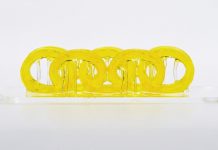
Researchers at the University of Washington have developed a small, self-moving robot named MilliMobile that’s changing the way we think about robotics and energy use.
The typical problem with tiny mobile robots is that they often need a lot of energy to move, and usually, batteries are the solution.
However, batteries don’t last forever and aren’t great for the environment.
Scientists have been trying to find different ways to power these little robots, but every solution seemed to have its own set of problems.
That’s where MilliMobile comes in. It’s about the size of a penny and as heavy as a raisin but doesn’t need batteries or cords.
It runs solely on light and radio waves from its surroundings, which it harvests using a device similar to a solar panel.
It can move 30 feet, or about the length of a bus, in an hour, even on cloudy days, and it can carry equipment like cameras or sensors that are three times its own weight.
This means it could be used for various tasks like detecting gas leaks or keeping track of items in a warehouse. And the best part? It can keep going as long as it has light, moving automatically toward light sources.
The idea behind MilliMobile was to break down the robot’s movements into small steps, so it could work gradually as it gathered energy.
This approach allows the robot to operate on very limited power, moving in short bursts of energy. Even when the light is low, like under a kitchen counter, MilliMobile can still move, albeit slowly.
The team experimented with MilliMobile in different places, both indoors and outdoors, including parks and offices.
By moving continuously, even at a slow pace, MilliMobile and robots like it can explore areas and collect detailed data where other sensors might struggle.
What’s more interesting is that MilliMobile can steer itself. It has onboard sensors and small computing chips that allow it to navigate. It even uses light sensors to move towards a light source. This is important because, unlike usual ‘Internet of Things’ sensors that are fixed in one place, MilliMobile can roam around, collecting more detailed information about its environment.
This can be particularly useful in smart farms, where robots could monitor soil moisture and humidity, or in factories, where they could detect equipment malfunctions by identifying electromagnetic noise.
MilliMobile is also equipped with various sensors to measure light, temperature, and humidity, and it has Bluetooth to send data over long distances, up to 650 feet. In the future, the team plans to add more sensors and enhance the robots’ ability to share data amongst themselves.
This tiny robot, with its ability to move on different surfaces and function using environmentally friendly energy sources, is a promising advancement in the realm of robotics and sensor technology.
Its ability to autonomously navigate and collect detailed data from its surroundings can be invaluable in various applications, from agriculture to industrial settings, paving the way for a future where swarms of these tiny robots could assist us in understanding and managing our environment more effectively.
Follow us on Twitter for more articles about this topic.



